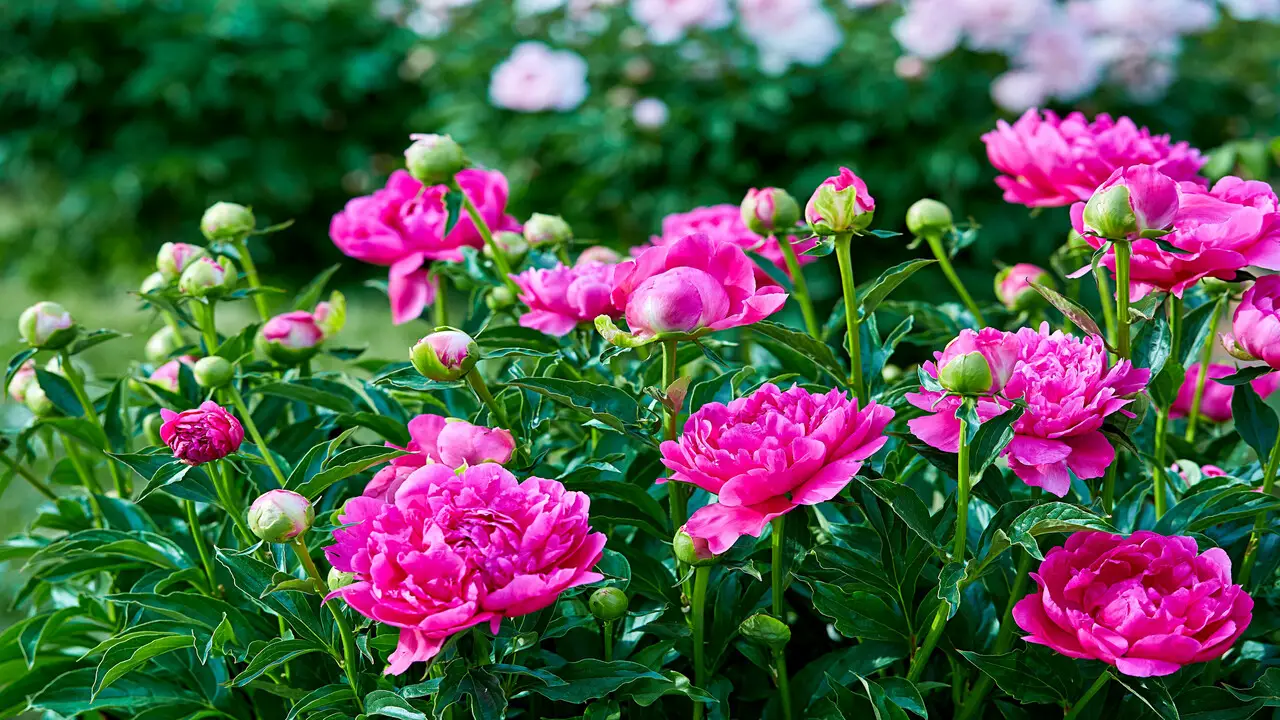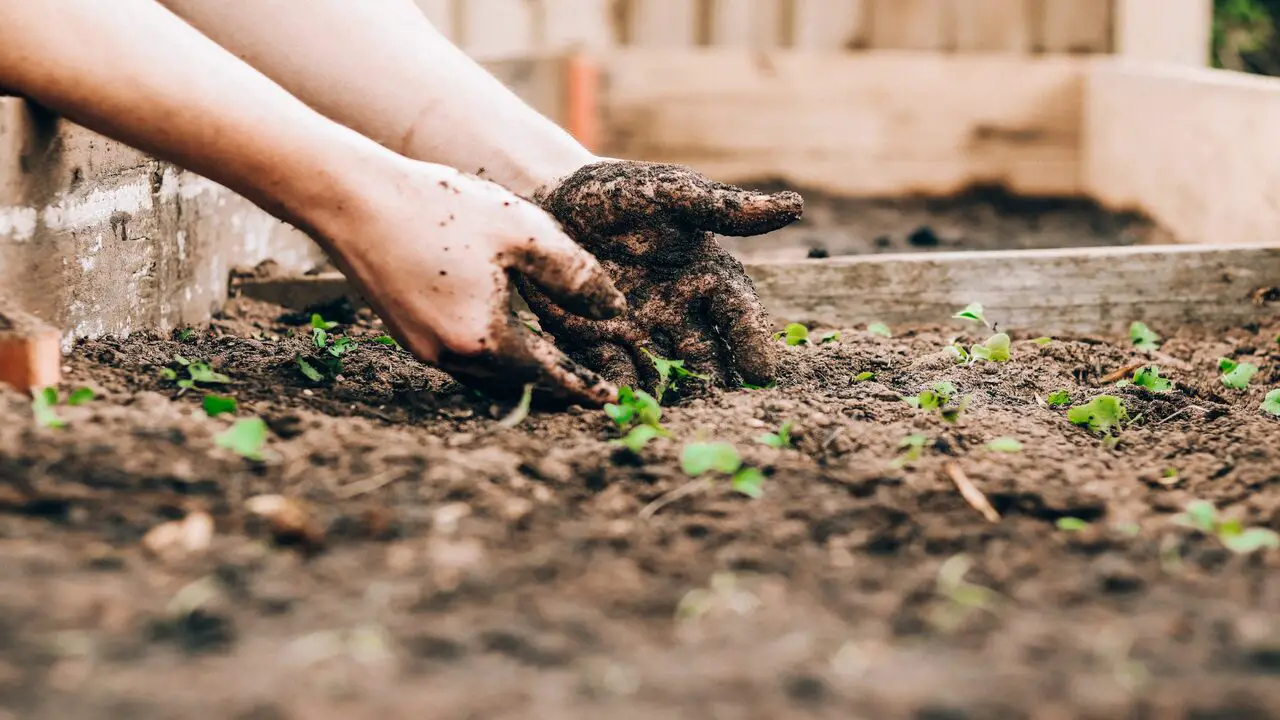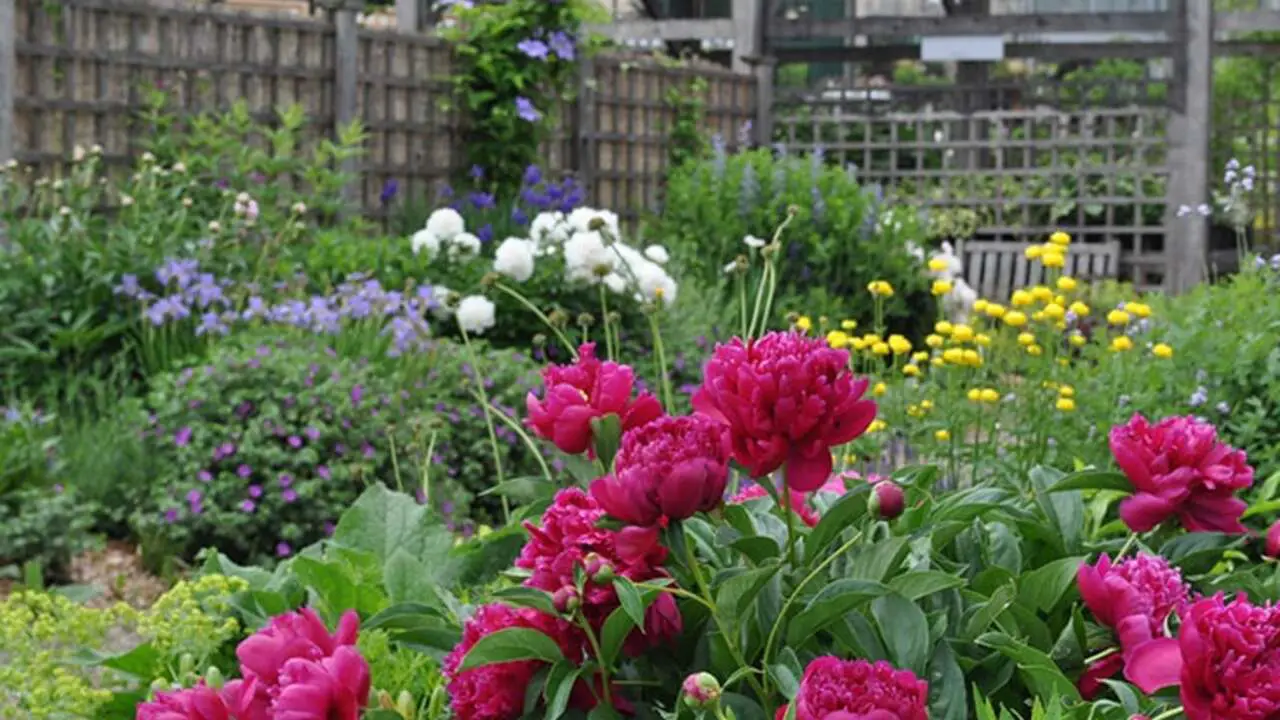Spring is a time of rejuvenation and new growth, making it the perfect season for gardening enthusiasts to start planning and planting their flower beds.
Among the many beautiful flowers that bloom during this time, peonies are popular for their vibrant colors and delicate petals. However, there is often confusion surrounding when and how to plant peonies, particularly in the spring. As a result, many gardeners wonder if it is possible to plant peonies during this season and whether they will thrive.
Can you plant peonies in the spring? We will explore the various aspects of planting peonies in the spring, including the best time to plant, proper care and maintenance, and common mistakes to avoid. You will thoroughly understand how to successfully plant and grow peonies in the spring and be well-equipped to create a stunning peony garden in your backyard.

Types Of Peonies To Plant
When planting peonies in the spring, there are several types to consider. When choosing which types of peonies to plant in the spring, consider factors such as your climate, soil conditions, and personal preferences. With so many options available, you will surely find the perfect peony to enhance your garden this season. Here are some popular options:
- Herbaceous Peonies: These are the most common type of peonies known for their large, showy blooms. They die back to the ground in the winter and regrow in the spring.
- Tree Peonies: These peonies have woody stems and can grow into small trees or shrubs. They produce stunning, long-lasting flowers that come in a variety of colors.
- Intersectional Peonies: Also known as Itoh peonies, these hybrids are a cross between herbaceous and tree peonies. They have the best qualities of both types, with sturdy stems and large, colorful flowers.
- Coral Peonies: These peonies have vibrant coral-colored blooms that add color to any garden. They are a unique and eye-catching choice for spring planting.
- Fragrant Peonies: If you’re looking for peonies with a delightful fragrance, consider varieties like ‘Sarah Bernhardt’ or ‘Festiva Maxima.’ These peonies not only look beautiful but also smell amazing.
Can You Plant Peonies In The Spring? Explained

Yes, you can plant peonies in the spring. Spring is an ideal time to plant peonies because it allows them to establish their root systems before the hot summer months. When planting peonies in the spring, choosing a location with well-drained soil and full sun is important. Dig a hole that is wide enough and deep enough to accommodate the peony root ball.
Place the peony in the hole, ensuring that the eyes (or growing points) face up and are just below the soil surface. Backfill the hole with soil, firming it gently around the roots. Water thoroughly after planting and continue to water regularly throughout the growing season. Your peonies should bloom beautifully in late spring or early summer with proper care. Below we provide details guidelines on can you plant peonies in the spring.
When To Plant Peonies In The Spring
It is recommended to plant peonies in the early spring for optimal growth. The best time to do so is before they start sprouting. Ensure that the soil is workable before you begin planting in the spring. It’s important to wait until the soil warms up to avoid any potential damage.
Planting peonies in the spring allows them to establish themselves before summer. This gives them a head start in developing a healthy root system and ensures they are well-prepared to bloom when the time comes. Remember to provide plenty of room for their growth and choose a planting site with good drainage.
Preparing The Soil Before Planting

To ensure successful peony planting, proper soil preparation is crucial. Ensure the soil is well-drained, as peonies do not thrive in soggy soil. Amend the soil with organic matter, such as compost, to improve its quality and provide essential nutrients for the peonies. It’s also important to check the soil pH, as peonies prefer slightly acidic soil with a pH between 6.5 and 7.0. Adding compost and organic matter can create an ideal environment for your peonies to grow and flourish. This will help establish a healthy root system and promote the development of beautiful blooms.
When To Plant Peonies
Late summer or early fall is the optimal time to plant peonies. This allows the herbaceous peonies to establish a healthy root system before the first winter frost. Choosing a planting site with good drainage is important to avoid waterlogged soil, as peonies don’t tolerate soggy conditions. Planting peonies in the late fall or early spring is not recommended, as it may cause the plants to suffer from powdery mildew or botrytis blight.
For the best results, ensure that the peony roots are positioned at the right soil level, with the eyes or buds facing upwards. Planting peonies in the late summer or early fall gives them plenty of room to grow and develop into mature plants, rewarding you with large blooms and wonderful cut flowers.
Choosing The Right Peony Variety For Your Garden
Choosing the right peony variety for your garden ensures successful growth and beautiful blooms. When planting peonies in the spring, it’s important to consider factors such as climate, soil type, and available sunlight.
Some peony varieties are better suited for certain conditions than others, so it’s important to research and select a variety that will thrive in your specific garden environment. Whether you prefer classic herbaceous peonies or the stunning tree peony varieties, there are many options. By selecting the right peony variety for your garden, you can enjoy vibrant and fragrant blooms for years.
How To Overcome Common Peony Planting Problems

To ensure successful peony planting, there are a few common problems that you need to overcome. First, providing good air circulation around your peonies is crucial to prevent fungal diseases. You can achieve this by spacing them adequately apart and avoiding overcrowding.
Another problem to address is protecting the peony roots from harsh winter temperatures. Applying a layer of mulch around the plants can help insulate the roots and prevent damage. Additionally, be careful not to plant the peonies too deep, as this can lead to the rotting of the crown. Aim for planting at the right depth, with the eyes just below the soil surface.
Regular watering is essential, but be mindful not to overwater and cause root rot. Finally, prune and remove spent flowers to promote healthy peony growth. Following these tips, you can overcome common peony planting problems and enjoy beautiful blooms in your garden.
The Main Reasons Why Peonies May Not Perform Well In The Spring
There are several reasons why peonies may not perform well when planted in the spring. Here are some of the main factors to consider:
- Lack Of Established Root System: Peonies typically benefit from planting in the fall, allowing them to develop a strong root system before the growing season. When planted in the spring, they may struggle to establish roots quickly enough to support healthy growth.
- Temperature Fluctuations: Spring weather can be unpredictable, with fluctuating temperatures that can be stressful for newly planted peonies. Extreme cold or heat can damage or stunt their growth, leading to poor performance.
- Watering Issues: Proper watering is crucial for successful peony growth, but regulating moisture levels during the spring can be more challenging. Excessive rainfall or inconsistent watering practices can lead to waterlogged soil or drought stress, which can negatively impact peonies.
- Pests And Diseases: Spring is when many pests and diseases become more active. Peonies are susceptible to various issues, such as fungal diseases and pest infestations, which can hinder their growth and overall performance.
While it is possible to plant peonies in the spring, it is generally recommended to plant them in the fall for optimal results. If you choose to plant them in the spring, paying attention to these factors and providing proper care will help give your peonies the best chance of thriving.
Tips For Growing Healthy Peonies

Growing peonies in the spring can be a rewarding experience if done correctly. By following these tips, you can ensure that your peonies grow healthy and produce beautiful blooms year after year. Here are some tips for growing healthy peonies:
- Choose The Right Location: Peonies thrive in full sun or light shade, so select a spot in your garden that receives at least 6 hours of direct sunlight daily. The soil should also be well-draining and rich in organic matter.
- Prepare The Soil: Before planting your peonies, it’s important to prepare the soil properly. Dig a hole that is wide and deep enough to accommodate the roots without crowding them. Amend the soil with compost or well-rotted manure to improve drainage and fertility.
- Planting Depth: Peony roots should be planted no more than 2 inches below the soil surface. Planting them too deep can inhibit their growth and flowering.
- Watering: Peonies require regular watering, especially during dry spells. However, it’s important not to overwater them as this can cause root rot. Aim for moist but not waterlogged soil.
- Mulching And Fertilizing: Apply a layer of mulch around your peony plants to help conserve moisture and suppress weed growth. In terms of fertilization, peonies generally don’t require much additional feeding. You can apply a balanced slow-release fertilizer in early spring or after the plants have finished blooming.
How To Care For Your Peonies During The Growing Season
Caring for peonies during the growing season is essential to ensure that they thrive and produce beautiful blooms. Following these care tips, you can enjoy a season full of beautiful peony blooms in your garden. Here are some tips on how to care for your peonies during this time:
- Watering: Peonies require regular watering, especially during dry spells. It is important to water deeply, ensuring that the soil is moist but not waterlogged. Avoid overhead watering as it can lead to diseases.
- Fertilizing: Peonies benefit from a balanced fertilizer applied in early spring or after they have finished blooming. This will give them the nutrients for healthy growth and abundant blooms.
- Mulching: Applying a layer of organic mulch around the base of the plants helps to retain moisture, suppress weed growth, and regulate soil temperature. You should apply mulch in early spring and replenish it throughout the growing season.
- Support: As peonies grow, their heavy blooms can cause the stems to bend or break. Providing support with stakes or cages can help prevent this and keep the plants upright.
- Deadheading: Removing spent flowers encourages the plant to put its energy into producing new blooms instead of developing seeds. Simply snip off the faded blossoms at their base once they have finished blooming.
Conclusion
To sum up, planting peonies in the spring is possible. Spring is an ideal time to plant bare-root peonies, as they have time to establish their roots before the hot summer months. Choose the right variety for your garden and prepare the soil properly before planting. Pay attention to common planting problems, such as too deep or too shallow, and take steps to overcome them.
Once your peonies are planted, provide them with the necessary care throughout the growing season, including watering, fertilizing, and protecting them from pests and diseases. With proper care and attention, you can enjoy beautiful, healthy peonies in your garden all summer long. We hope you now understand can you plant peonies in the spring.
Frequently Asked Questions
1.Will Peonies Grow If Planted In Spring?
Ans: Yes, peonies can thrive if planted in the spring, although planting them in the fall is recommended for optimal growth. Choose a sunny spot with well-drained soil, water regularly, and fertilize as needed to promote healthy growth.
2.Can You Plant Peony Bulbs In April?
Ans: Yes, peony bulbs can be planted in April. This is the perfect time, as the ground has warmed up and is ready for planting. Ensure that you choose a location with well-draining soil and full sun exposure. Plant the peony bulb at a depth of 2 inches and cover it with soil.
3.What Month Is Best To Plant Peonies?
Ans: The ideal time to plant peonies is in the fall, typically in late September or early October. However, if you missed the fall planting window, early spring (March-April) is also suitable. Just ensure that the soil is not frozen and is workable. Remember that peonies planted in spring may take longer to establish and bloom than those planted in the fall.
4.Do You Fertilize Peonies In Spring?
Ans: Yes, it is possible to fertilize peonies in the spring. Use a balanced fertilizer with equal nitrogen, phosphorus, and potassium. Apply it around the base of the plant, avoiding direct contact with the stem or leaves. Water thoroughly after fertilizing for better absorption.
5.Should You Fertilize Peonies In Spring?
Ans: Fertilizing peonies in spring is necessary for their healthy growth. Use a peony-specific fertilizer and follow the instructions on the package. Apply it when the plant starts emerging and after it finishes blooming. Avoid over-fertilization to prevent harm to the plant.







